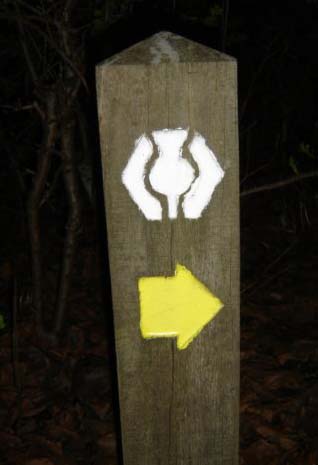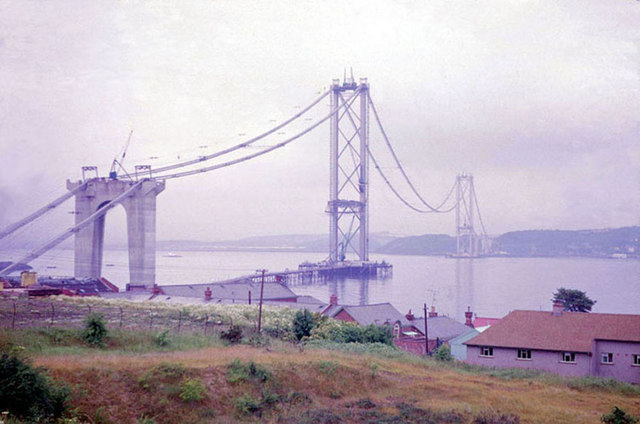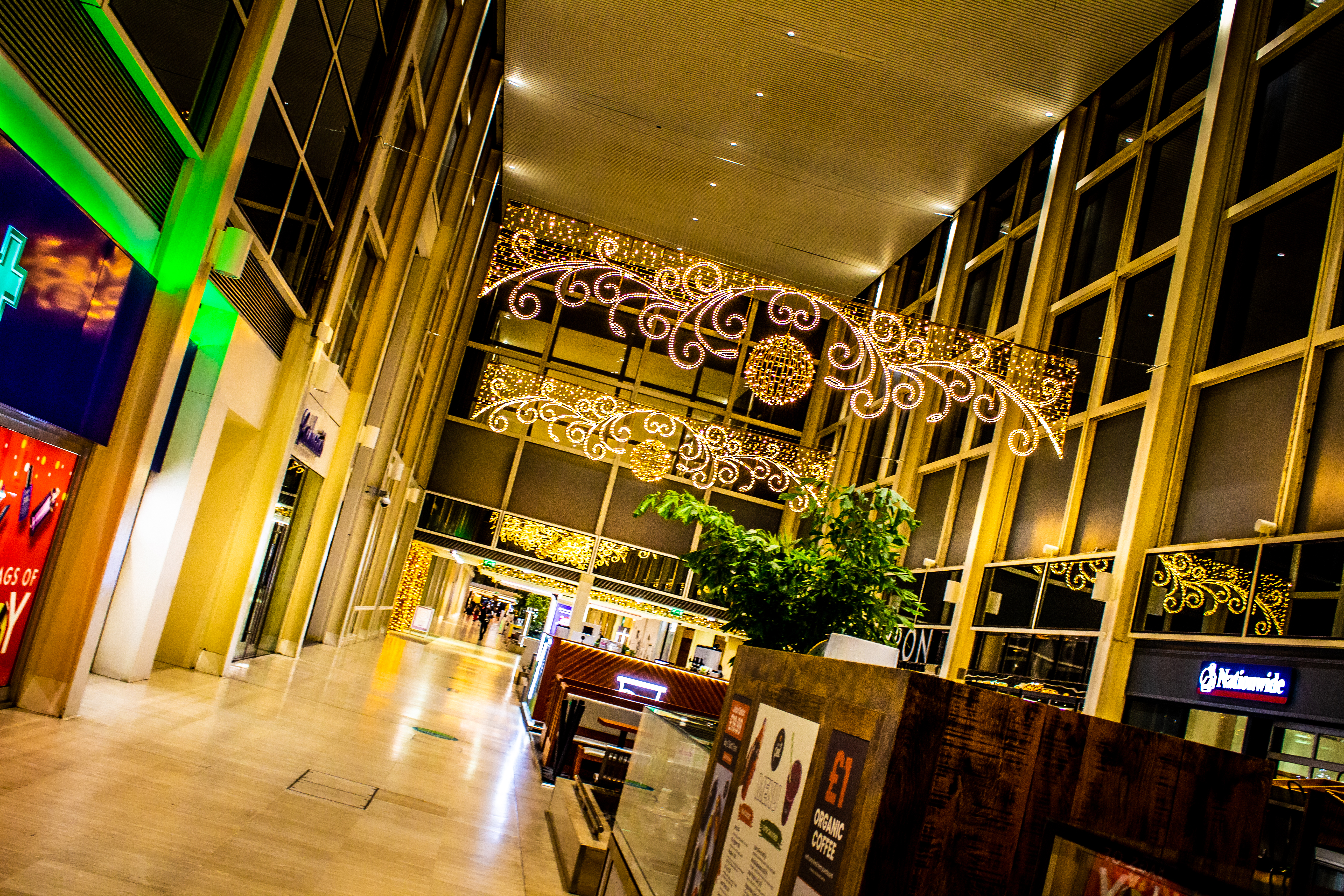|
Don Ritchie (runner)
Donald Alexander Ferguson Ritchie (6 July 1944 – 16 June 2018) was a Scottish ultramarathon runner. He was born in 1944 at Haddo House, Aberdeenshire, which was then being used as a wartime maternity hospital. His parents were Alec Ritchie and Rachel (née Ferguson). Initially as a runner he was encouraged to race the quarter-mile but soon drifted towards longer distances and was supported by Peter Duffy and Alastair Wood, both established endurance athletes. Ritchie's first ultra event was the 36 mile Two Bridges race across the Forth and Kincardine bridges in 1970. In 1977 and 1978, he won the London to Brighton Race. Ritchie ran 100 miles at the Crystal Palace track on 25 October 1977 in a time of 11:30:51. This was the fastest time ever recorded for 100 miles and stood as the record until 2002 when it was broken by Oleg Kharitonov, who ran 11:28:03 in a race held to celebrate the twenty-fifth anniversary of Ritchie’s performance. In October 1978, Ritchie covered 100&nb ... [...More Info...] [...Related Items...] OR: [Wikipedia] [Google] [Baidu] |
Haddo House
Haddo House is a Scottish stately home located near Tarves, Aberdeenshire, Tarves in Aberdeenshire, approximately north of Aberdeen (). The former seat of the Marquess of Aberdeen and Temair, Earls and Marquesses of Aberdeen and Temair, Haddo House has been owned by the National Trust for Scotland since 1979. Establishment and architectural style The Gordons, who later became the Marquess of Aberdeen and Temair, Earls of Aberdeen and Marquess of Aberdeen and Temair, Marquesses of Aberdeen, lived on the site for more than 500 years.National Trust for Scotland Haddo House sits in or near the site of the old Kellie Castle, the family's previous dwelling which was burnt down by the Covenanters and dates from 1732; it was designed by William Adam (architect), William Adam in the Georgian archit ... [...More Info...] [...Related Items...] OR: [Wikipedia] [Google] [Baidu] |
Order Of The British Empire
The Most Excellent Order of the British Empire is a British order of chivalry, rewarding valuable service in a wide range of useful activities. It comprises five classes of awards across both civil and military divisions, the most senior two of which make the recipient either a Orders, decorations, and medals of the United Kingdom#Modern honours, knight if male or a dame (title), dame if female. There is also the related British Empire Medal, whose recipients are affiliated with the order, but are not members of it. The order was established on 4 June 1917 by King George V, who created the order to recognise 'such persons, male or female, as may have rendered or shall hereafter render important services to Our Empire'. Equal recognition was to be given for services rendered in the UK and overseas. Today, the majority of recipients are UK citizens, though a number of Commonwealth realms outside the UK continue to make appointments to the order. Honorary awards may be made to cit ... [...More Info...] [...Related Items...] OR: [Wikipedia] [Google] [Baidu] |
British Ultramarathon Runners
British may refer to: Peoples, culture, and language * British people, nationals or natives of the United Kingdom, British Overseas Territories and Crown Dependencies. * British national identity, the characteristics of British people and culture * British English, the English language as spoken and written in United Kingdom of Great Britain and Northern Ireland and, more broadly, throughout the British Isles * Celtic Britons, an ancient ethno-linguistic group * Brittonic languages, a branch of the Insular Celtic language family (formerly called British) ** Common Brittonic, an ancient language Other uses *People or things associated with: ** Great Britain, an island ** British Isles, an island group ** United Kingdom, a sovereign state ** British Empire, a historical global colonial empire ** Kingdom of Great Britain (1707–1800) ** United Kingdom of Great Britain and Ireland (1801–1922) * British Raj, colonial India under the British Empire * British Hong Kong, colonial Ho ... [...More Info...] [...Related Items...] OR: [Wikipedia] [Google] [Baidu] |
British Male Long-distance Runners
British may refer to: Peoples, culture, and language * British people, nationals or natives of the United Kingdom, British Overseas Territories and Crown Dependencies. * British national identity, the characteristics of British people and culture * British English, the English language as spoken and written in United Kingdom of Great Britain and Northern Ireland and, more broadly, throughout the British Isles * Celtic Britons, an ancient ethno-linguistic group * Brittonic languages, a branch of the Insular Celtic language family (formerly called British) ** Common Brittonic, an ancient language Other uses *People or things associated with: ** Great Britain, an island ** British Isles, an island group ** United Kingdom, a sovereign state ** British Empire, a historical global colonial empire ** Kingdom of Great Britain (1707–1800) ** United Kingdom of Great Britain and Ireland (1801–1922) * British Raj, colonial India under the British Empire * British Hong Kong, colonial H ... [...More Info...] [...Related Items...] OR: [Wikipedia] [Google] [Baidu] |
Scottish Male Long-distance Runners
Scottish usually refers to something of, from, or related to Scotland, including: *Scottish Gaelic, a Celtic Goidelic language of the Indo-European language family native to Scotland *Scottish English *Scottish national identity, the Scottish identity and common culture *Scottish people, a nation and ethnic group native to Scotland * Scots language, a West Germanic language spoken in lowland Scotland *Symphony No. 3 (Mendelssohn), a symphony by Felix Mendelssohn known as ''the Scottish'' See also *Scotch (other) *Scotland (other) *Scots (other) *Scottian (other) *Schottische The schottische is a partnered country dance that apparently originated in Bohemia. It was popular in Victorian-era ballrooms as a part of the Bohemian folk-dance craze and left its traces in folk music of countries such as Argentina (Spanish ... * {{disambiguation Language and nationality disambiguation pages ca:Escocès ... [...More Info...] [...Related Items...] OR: [Wikipedia] [Google] [Baidu] |
2018 Deaths
This is a list of lists of deaths of notable people, organized by year. New deaths articles are added to their respective month (e.g., Deaths in ) and then linked below. 2025 2024 2023 2022 2021 2020 2019 2018 2017 2016 2015 2014 2013 2012 2011 2010 2009 2008 2007 2006 2005 2004 2003 2002 2001 2000 1999 1998 1997 1996 1995 1994 1993 1992 1991 1990 1989 1988 1987 1986 Earlier years ''Deaths in years earlier than this can usually be found in the main articles of the years.'' See also * Lists of deaths by day * Deaths by year (category) {{DEFAULTSORT:deaths by year ... [...More Info...] [...Related Items...] OR: [Wikipedia] [Google] [Baidu] |
1944 Births
Events Below, the events of World War II have the "WWII" prefix. January * January 2 – WWII: ** Free France, Free French General Jean de Lattre de Tassigny is appointed to command First Army (France), French Army B, part of the Sixth United States Army Group in North Africa. ** Landing at Saidor: 13,000 US and Australian troops land on Papua New Guinea in an attempt to cut off a Japanese retreat. * January 8 – WWII: Philippine Commonwealth troops enter the province of Ilocos Sur in northern Luzon and attack Japanese forces. * January 11 ** United States President Franklin D. Roosevelt proposes a Second Bill of Rights for social and economic security, in his State of the Union address. ** The Nazi German administration expands Kraków-Płaszów concentration camp into the larger standalone ''Konzentrationslager Plaszow bei Krakau'' in occupied Poland. * January 12 – WWII: Winston Churchill and Charles de Gaulle begin a 2-day conference in Marrakech. * Janua ... [...More Info...] [...Related Items...] OR: [Wikipedia] [Google] [Baidu] |
Lossiemouth
Lossiemouth () is a town in Moray, Scotland. Originally the port belonging to Elgin, Moray, Elgin, it became an important fishing town. Although there has been over 1,000 years of settlement in the area, the present day town was formed over the past 250 years and consists of four separate communities that eventually merged into one. From 1890 to 1975, it was a police burgh as Lossiemouth and Branderburgh. Stotfield, the first significant settlement (discounting Kinneddar which has now disappeared), lies to the north west of the town. Next was the Seatown – a small area between the river and the canal inholding of 52 houses, 51 of which are the historic fisher cottages. When the new harbour was built on the River Lossie, the 18th-century planned town of Lossiemouth, built on a grid system, was established on the low ground below the Coulard Hill. Branderburgh formed the final development during the 19th century. This part of the town developed entirely as a result of the new ha ... [...More Info...] [...Related Items...] OR: [Wikipedia] [Google] [Baidu] |
Birthday Honours
The Birthday Honours, in some Commonwealth realms, mark the reigning monarch's official birthday in each realm by granting various individuals appointment into national or dynastic orders or the award of decorations and medals. The honours are presented by the monarch or a viceregal representative. The Birthday Honours are one of two annual honours lists, along with the New Year Honours. All royal honours are published in the relevant gazette. History Honours have been awarded with few exceptions on the sovereign's birthday since at least 1860, during the reign of Queen Victoria. There was no Birthday Honours list issued in 1876, which brought "a good deal of disappointment" and even rebuke for the Ministry of Defence. A lengthy article in the ''Broad Arrow'' newspaper forgave the Queen and criticised Gathorne Hardy for neglecting to award worthy soldiers with the Order of the Bath: "With the War Minister all general patronage of this description rests, and if Mr. Hardy has n ... [...More Info...] [...Related Items...] OR: [Wikipedia] [Google] [Baidu] |
West Highland Way
The West Highland Way () is a linear Long-distance trail, long-distance route in Scotland. It is long, running from Milngavie north of Glasgow to Fort William, Highland, Fort William in the Scottish Highlands, with an element of hill walking in the route. The trail, which opened in 1980, was Scotland's first officially designated Long Distance Route, and is now designated by NatureScot as one of Scotland's Great Trails. It is primarily intended as a long distance hiking, walking route, and whilst many sections are suitable for mountain biking and horseriding there are obstacles and surfaces that will require these users to dismount in places. It is managed by the West Highland Way Management Group (WHWMG) consisting of the local government in Scotland, local authorities for East Dunbartonshire, Stirling (council area), Stirling, Argyll and Bute and Highland (council area), Highland, alongside the Loch Lomond and The Trossachs National Park, Loch Lomond and The Trossachs Nationa ... [...More Info...] [...Related Items...] OR: [Wikipedia] [Google] [Baidu] |
Forth Road Bridge
The Forth Road Bridge is a suspension bridge in Central Belt, east central Scotland. The bridge opened in 1964 and at the time was the List of longest suspension bridge spans, longest suspension bridge in the world outside the United States. The bridge spans the Firth of Forth, connecting Edinburgh, at South Queensferry, to Fife, at North Queensferry. It replaced a centuries-old ferry service to carry vehicular traffic, cyclists and pedestrians across the Forth; railway crossings are made by the nearby Forth Bridge, opened in 1890. The Scottish Parliament voted to scrap tolls on the bridge from February 2008. The adjacent Queensferry Crossing was opened in August 2017 to carry the M90 motorway across the Firth of Forth, replacing the Forth Road Bridge which had exceeded its design capacity. At its peak, the Forth Road Bridge carried 65,000 vehicles per day. The Forth Road Bridge was subsequently closed for repairs and refurbishment. It reopened in February 2018, now redesigna ... [...More Info...] [...Related Items...] OR: [Wikipedia] [Google] [Baidu] |
Central Milton Keynes Shopping Centre
The Central Milton Keynes shopping area is a regional shopping centre located in Milton Keynes, Buckinghamshire, England which is about north-west of London. It comprises two adjacent shopping centres, (a grade II listed building, originally named the 'Shopping Building') which opened in 1979, and Midsummer Place opened in 2000. The is anchored by John Lewis and Marks & Spencer. , the centre:mk (alone) is the 12th largest shopping centre in the UK, with the size of . Development The Milton Keynes Development Corporation (MKDC) began work on the Shopping Building in 1973. It was to be the largest building of Central Milton Keynes, and was built at almost the highest point in the "New City". The architects were Derek Walker, Stuart Mosscrop, and Christopher Woodward, who had been Chief and senior architects at the Development Corporation; and the engineers were Felix Samuely and Partners. The shopping area was opened on 25 September 1979 by Prime Minister Margaret Thatc ... [...More Info...] [...Related Items...] OR: [Wikipedia] [Google] [Baidu] |




